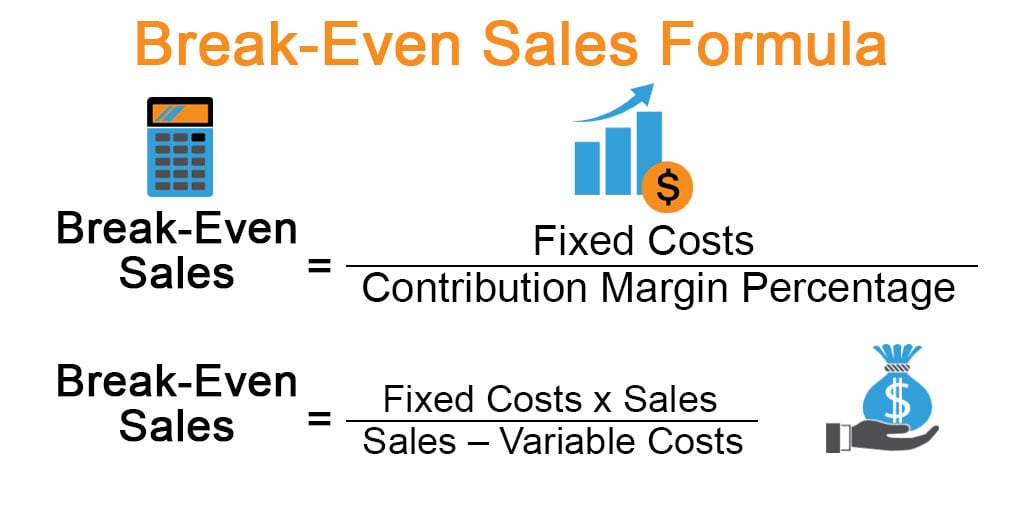
On the other hand, if this were applied to a put option, the breakeven point would be calculated as the $100 strike price minus the $10 premium paid, amounting to $90. If the stock is trading at a market price of $170, for example, the trader has a profit of $6 cash flow statement explained (breakeven of $176 minus the current market price of $170). If the stock is trading at $190 per share, the call owner buys Apple at $170 and sells the securities at the $190 market price. The profit is $190 minus the $175 breakeven price, or $15 per share.
Using break-even analysis to determine level of production
Note that in this formula, fixed costs are stated as a total of all overhead for the firm, whereas price and variable costs are stated as per unit costs—the price for each product unit sold. Let us say that Albert in Washington wants to know the break-even point for pens that he is going to sell. He calculates the fixed costs and variable costs which amount to $1,000 for one month and $0.10 per pen manufactured respectively. When companies calculate the BEP, they identify the amount of sales required to cover all fixed costs before profit generation can begin.
Contribution Margin Method (or Unit Cost Basis)
Break-even analysis, or the comparison of sales to fixed costs, is a tool used by businesses and stock and option traders. It is essential in determining the minimum sales volume required to cover total costs and break even. A breakeven point is used in multiple areas of business and finance. In accounting terms, it refers to the production level at which total production revenue equals total production costs.
Explore Square and our products
Assume a company has $1 million in fixed costs and a gross margin of 37%. In this breakeven point example, the company must generate $2.7 million in revenue to cover its fixed and variable costs. Break-even analysis is great for entrepreneurs or companies that are just starting out and unsure of what to sell, how much to sell, or where to allocate their budget.
To find your variable costs per unit, start by finding your total cost of goods sold in a month. If you have any other costs tied to the products you sell—like payments to a contractor to complete a job—add them to your cost of goods sold to find your total variable costs. As you can see, the Barbara’s factory will have to sell at least 2,500 units in order to cover it’s fixed and variable costs. Anything it sells after the 2,500 mark will go straight to the CM since the fixed costs are already covered. Let’s take a look at a few of them as well as an example of how to calculate break-even point. Break-even analysis helps businesses choose pricing strategies, and manage costs and operations.
The break-even point is when the total expenses of your business are equal to the total sales you make. In this situation, you are neither experiencing a loss nor a profit. You are getting the same amount of money that you are spending on running your business. When your revenue exceeds the break-even point, it shows that you are making a profit. When your revenue falls below the break-even point, it shows that you are incurring losses.
- He wants to know what kind of impact this new drink will have on the company’s finances.
- This is specifically true for those products that are going to be costly.
- Depending on your needs, you may need to calculate your profit margin or markup to find your revenue…
- While this could boost foot traffic, it also means your break-even point will change and you’ll need to sell more drinks to reach profitability.
- At that breakeven price, the homeowner would exactly break even, neither making nor losing any money.
But this can be offset by the increased volume of purchases from new customers. Maggie also pays $800 a month on rent, $200 in utilities, and collects a monthly salary of $1,500. The break-even point (BEP) is the amount of product or service sales a business needs to make to begin earning more than you spend.
In order to help you advance your career, CFI has compiled many resources to assist you along the path.
This lets them know how much product they need to sell to cover the cost of doing business. In this example, the business needs to generate \($50,000\) in sales revenue to cover both fixed and variable costs and reach the break-even point. This break-even calculator allows you to perform a task crucial to any entrepreneurial endeavor.

Break-even analysis, also known as break-even point analysis, involves calculating the point at which a business breaks even and what steps it might take to become profitable. If you find yourself asking these questions, it’s time to perform break-even analysis. Read on to learn all about how break-even analysis can serve your small business. Check out our piece on the best bookkeeping software for small-business owners. Like a lot of supposedly simple accounting principles, the break-even point is a little harder to understand than it initially appears.


